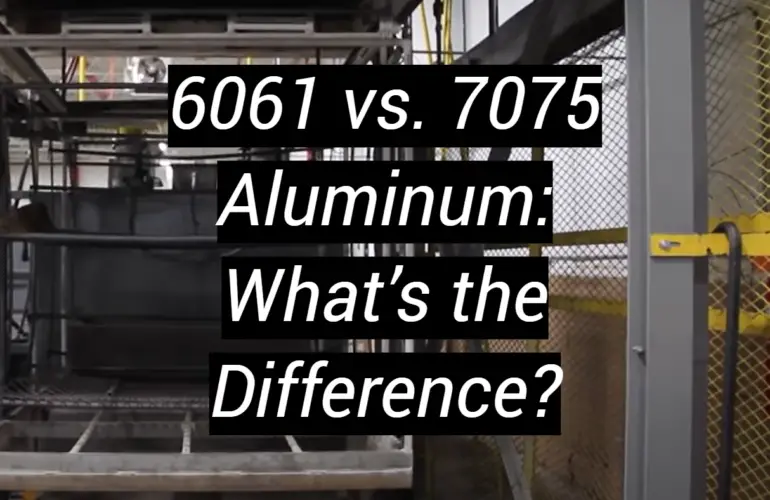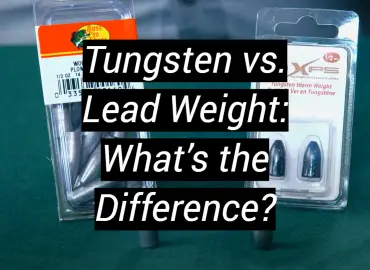Aluminum can be one of the most useful materials for constructing parts, components and products. Two commonly used aluminum alloys are 6061-T6 and 7075, out of the many available in the market. While they both have their own advantages, it’s important to understand which alloy is right for your next project or product since each type behaves differently in certain applications. Let’s compare two popular aluminum alloys and find out which one suits your requirements better.
What Is 6061 Aluminum?
One commonly used type of aluminum is 6061 alloy which is composed primarily of magnesium and silicon as its alloying elements. The 6061 aluminum has good strength-to-weight ratio, excellent machinability, and excellent resistance to corrosion. It is used in many applications ranging from furniture, boats, automotive parts, bicycle frames, and components.
When 6061 aluminum is heat treated properly, it provides good strength for various applications, despite being less tough than other alloys like 7075 aluminum. Its formability makes it an ideal choice for intricate shapes or complex designs where tight tolerances are required. Additionally, its high corrosion resistance makes it suitable for outdoor use without the need for additional protective coatings.

All in all, 6061 aluminum is a versatile and dependable metal alloy that’s perfect for many projects. When strength and weight are key considerations in the final product, choosing this material is a great option due to its mechanical properties and formability. [1]
What Is 7075 Aluminum?
If you need a material that is strong, lightweight, and resistant to corrosion for things like airplanes and other equipment, you might want to consider using 7075 aluminum. The 7075 alloy contains zinc as the major alloying element, giving it excellent strength-to-weight ratio and making it one of the strongest alloys currently available. It also has good fatigue strength, corrosion resistance, machinability, formability, and weldability. This makes it an excellent choice for a wide variety of aerospace and defense applications such as fuselage skins, wing structures, ribs/stringers/frames/bulkheads/nacels/spars/leading edges, landing gear components (particularly those subject to torsional stress) and more.
6061 vs. 7075 Aluminum: What’s the Difference?
Both 6061 and 7075 are popular aluminum alloys widely used in the manufacturing industry. To decide which type of aluminum is most suitable for your project, it’s important to understand the differences between the two.
6061 aluminum stands out for its exceptional weldability, formability, and workability strength, as well as its solid corrosion resistance and toughness. This option is suitable for tasks that do not require high strength, but can be used for a variety of purposes. However, it can still give comparable performance to stronger materials like steel when used in specific situations.
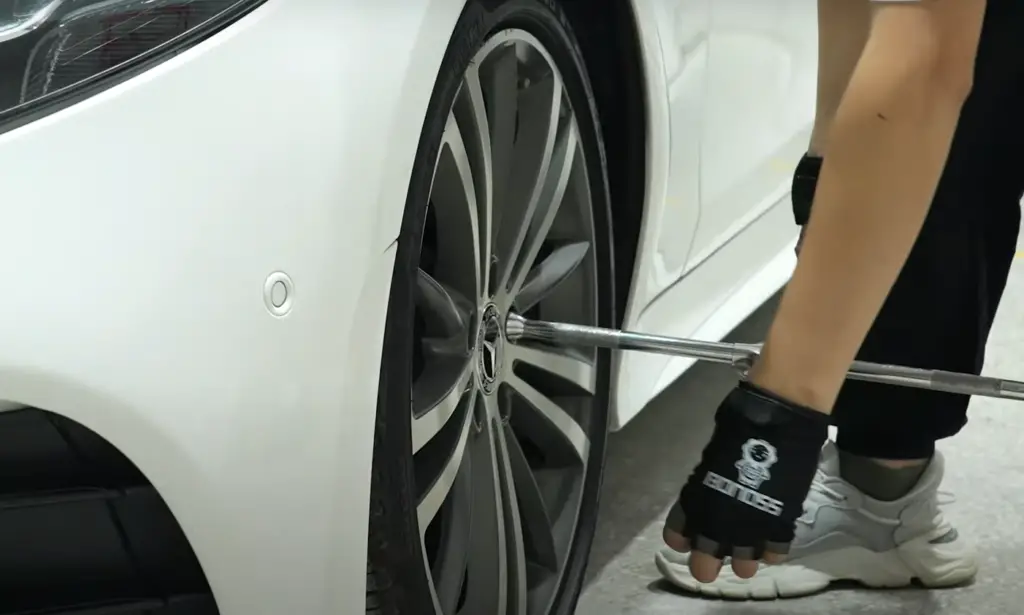
On the other hand, 7075 aluminum has much higher levels of strength than 6061; making it more suitable for projects that require strength and wear resistance. It is often used to make aircraft parts and can be found in high-stress tools such as cycling components. Although its higher strength makes it more difficult to shape, 7075 aluminum offers a good compromise between strength and machinability.
Both 6061 and 7075 aluminum alloys offer their own unique qualities depending on the project you are working on, but ultimately the decision of which one to use will depend on your particular needs and the application they are being used for.
Ultimately, both provide excellent performance in their own way and the choice between them is a matter of personal preference.When it comes to choosing between 6061 vs 7075 aluminum, it is important to weigh both the positives and negatives of each type before making your final decision. This will ensure that you are able to get the most out of your project and create something that meets your needs and provides long-term performance. [2]
Pros and Cons of 6061 Aluminum
6061 aluminum alloy is one of the most commonly used aluminum alloys. It has a relatively low density compared to other aluminum grades, making it lightweight and easy to work with. The material is also resistant to corrosion and does not require frequent maintenance. Additionally, 6061 aluminum is highly ductile and malleable, allowing for fabrication into complex shapes without compromising its strength and durability.
On the downside, 6061 aluminum may be too soft for certain applications that require high strength or extreme wear-resistance. This alloy tends to deform more easily than other higher grade aluminum alloys such as 7075 or 2024, which are better suited for heavy-duty uses including aerospace structures or automotive components. Weaker applications like consumer electronics will likely benefit from 6061 aluminum, however.
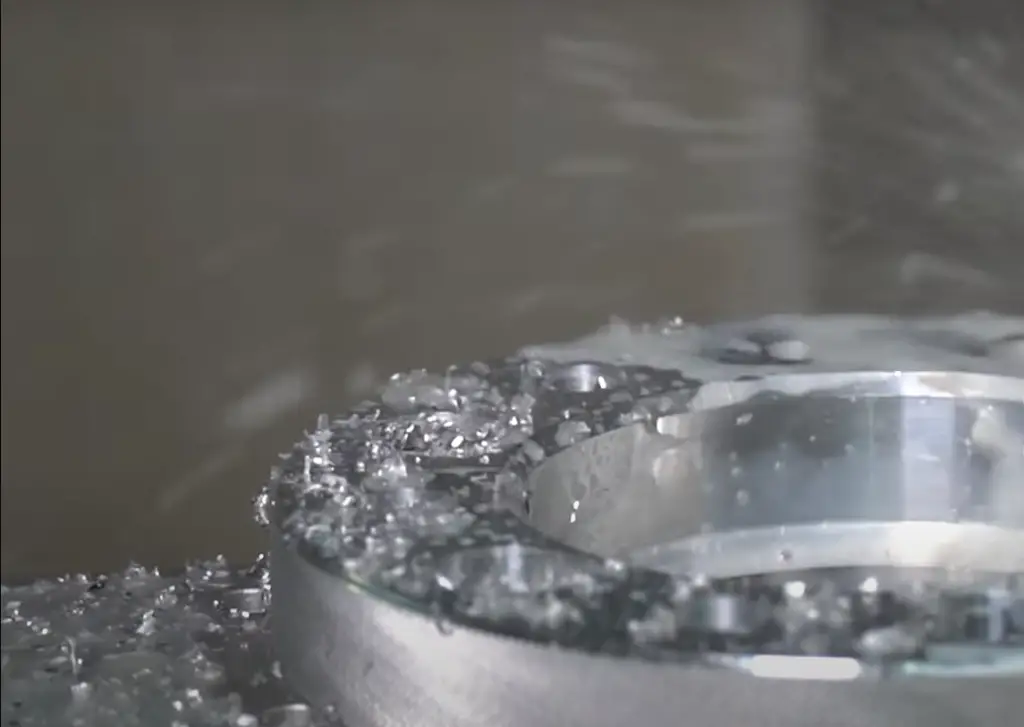
In conclusion, the benefits of 6061 aluminum significantly outweigh its drawbacks for most applications due to its low weight and easy malleability. It is an excellent choice for projects that require a lightweight material with enhanced durability and corrosion resistance. However, designers must consider their specific needs before selecting this alloy over others in order to ensure they are choosing the best solution for their project.
Pros and Cons of 7075 Aluminum
7075 Aluminum has a variety of advantages over 6061 aluminum, but it also comes with some drawbacks.
One of the biggest advantages is strength. 7075 aluminum alloy is one of the strongest commercially available alloys and is suitable for use in applications where high strength and light weight are critical. This makes it ideal for aerospace, automotive, and defense industries where strong yet lightweight materials are essential.
It also tends to be more expensive than other grades due to its relative rarity in comparison with 6061 aluminum. Additionally, while it does possess excellent corrosion resistance like most other aluminum alloys, 7075 can suffer from stress corrosion cracking if not properly treated.Overall, while there are some drawbacks to using 7075 aluminum compared to 6061 aluminum, its increased strength makes it an ideal choice for applications where light weight and high strength are essential. It is also important to be aware of the potential for stress corrosion cracking and treat the alloy appropriately.
Maintenance Tips for 6061 Aluminum
For 6061 aluminum, proper maintenance and care can help keep it in good condition over time. Here are a few tips for keeping your 6061 aluminum in its best shape:
- Clean regularly. To prevent dirt and debris from building up on the surface of your aluminum, be sure to clean it regularly. Use a mild detergent with warm water and use a soft brush or cloth to scrub off any dirt particles that have accumulated on the metal’s surface.
- Avoid corrosive cleaners. For most cleaning jobs, mild soap and water should do the trick. However, for more stubborn stains or dried-on dirt spots, avoid using strong chemicals or detergents as they might cause corrosion on the aluminum’s surface.
- Rinse thoroughly. After scrubbing the aluminum, be sure to rinse it off thoroughly. This will help get rid of any soap residue left on the metal which could cause staining if left behind.
- Dry quickly. Once you have finished rinsing off your aluminum, make sure to dry it with a soft cloth or lint-free towel as soon as possible. Leaving your aluminum wet for too long can cause damage and discoloration over time.
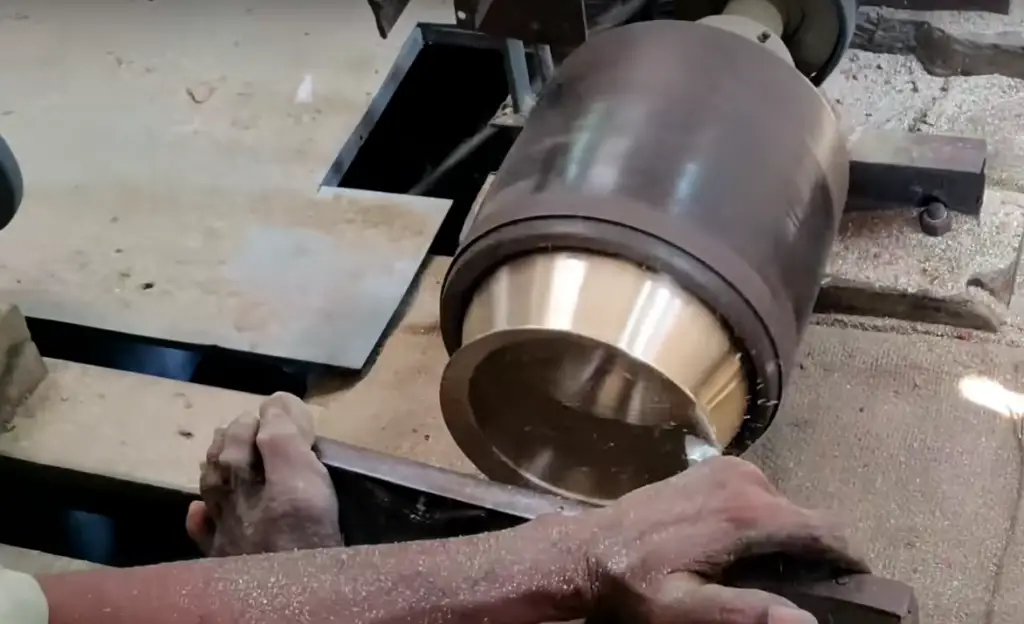
By following these maintenance tips, you can keep your 6061 aluminum looking its best and ensure that it lasts for years to come! [3]
Maintenance Tips for 7075 Aluminum
To keep 7075 aluminum in optimal condition, proper maintenance is essential. Here are a few tips to ensure your 7075 aluminum lasts as long as possible:
- Clean the material regularly – Dirt and debris can cause scratches on the surface of the aluminum, leading to a decrease in its overall lifespan. Make sure you clean it with an appropriate cleaner or solvent at least once every couple of weeks.
- Avoid direct sunlight – Sunlight can fade and damage 7075 aluminum over time, so try to store it somewhere shaded if possible. You should also avoid placing it near other materials that may generate heat, such as car engines or machinery.
- Keep it lubricated – If your 7075 aluminum is used for mechanical purposes, make sure to lubricate it regularly. This will help ensure the components move smoothly and reduce friction-related wear and tear.
- Inspect regularly – Don’t forget to inspect your 7075 aluminum frequently for signs of damage or wear and tear. If you notice anything suspicious, address it immediately to avoid further problems down the line.
By following these tips, you can extend the life of your 7075 aluminum and enjoy its many benefits for years to come! [4]
Alternatives to 6061 and 7075 Aluminum
When it comes to choosing an aluminum alloy for a project, 6061 and 7075 aren’t the only options. While these two alloys are often used in manufacturing due to their strength and durability, there may be other aluminum alloys that are better suited depending on the particular application.
For instance, 2024 is ideal for aircraft structures since it has a high fatigue resistance and excellent machinability. It’s also less expensive than some of the other aerospace-grade aluminum alloys.
6063 is one of the most widely used aluminum alloys and is commonly found in architectural applications due to its excellent corrosion resistance, low weight, and relatively high strength. It also offers good formability which makes it easier to shape into complex designs.
Finally, 1100 aluminum is extremely soft and is often used for food packaging, chemical tanks, and heat exchangers due to its excellent corrosion resistance. It’s also one of the least expensive aluminum alloys on the market.
No matter what project you are working on, there are a variety of aluminum alloys available that can meet your needs. Do some research into the different options before making a decision so you can find an alloy that will be both effective and cost-efficient for your particular application.
Applications of 6061 Aluminum
6061 aluminum has a wide variety of applications. It is often used for structural components such as bike frames, aircraft parts, musical instruments, and other transportation vehicles. This alloy is also popular in architecture due to its lightweight and corrosion resistance. 6061 aluminum can be found in architectural structures such as window frames, door frames, trims, stairways, railings and ladders. It is also used in automotive components such as bumpers, trim pieces and engine components.
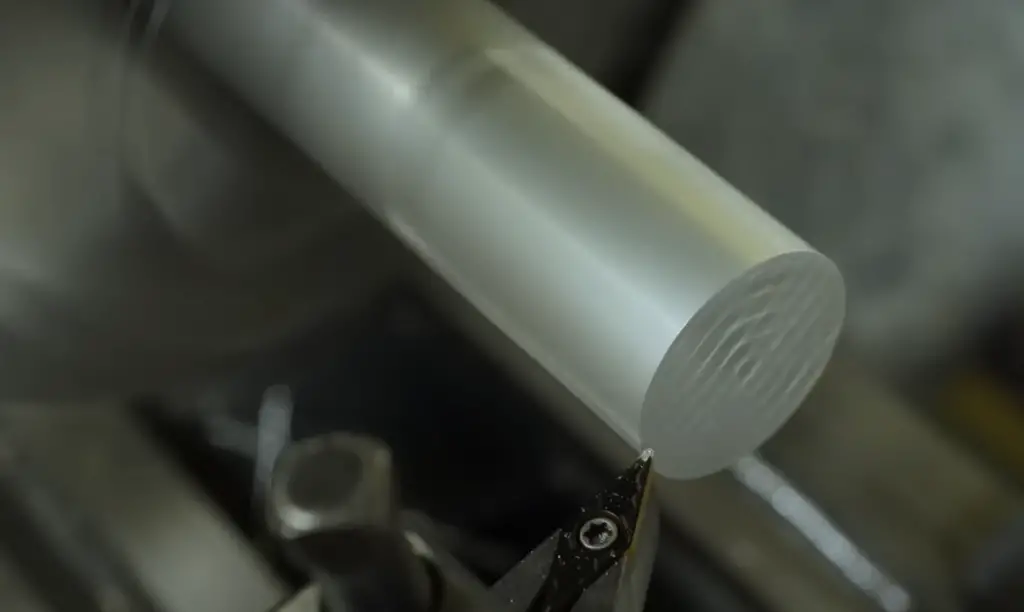
The most common use for 6061 aluminum is in the manufacturing of tooling plates and fixtures because it provides excellent machinability and high strength-to-weight ratio. Additionally, this alloy type does not suffer from stress corrosion cracking when stressed in a corrosive environment. 6061 aluminum is also commonly used for electrical components, machinery parts and decorative items due to its strength and durability.
Applications of 7075 Aluminum
Due to its high strength-to-weight ratio, 7075 aluminum is frequently used in the manufacture of aircraft components such as fuselage frames and wings. It’s also found in sports equipment like baseball bats, tennis racquets, golf clubs, fishing reels and skis. Other applications include bicycle frames, truck parts and power transmission components.
Its light weight makes it ideal for many automotive parts including suspension systems and chassis components where stiffness is important. Its superior corrosion resistance compared to other aluminum alloys makes it useful for fuel tanks, boat hulls and marine hardware. Additionally, due to its low reactivity with salt water, it’s often used in the marine industry for piping systems and fittings.
In the construction industry, 7075 aluminum is often used for structural components. This includes doors, windows, ladders and scaffolding. It can also be found in handrails, fencing posts and bridge decking. Finally, due to its superior machinability compared to other aluminum alloys, it’s often used for precision machinery parts such as gears and cams. [5]
What Is The Difference In The Cost?
When it comes to cost, 7075 aluminum is much more expensive than 6061 aluminum. For most projects requiring aluminum, the cheaper 6061 alloy will be sufficient; however, if a project has specific requirements or needs additional strength, 7075 may be worth the extra money. It largely depends on what you are using the material for and what materials you have available. For example, if you’re working with an existing piece of machinery that requires 7075 aluminum parts to function properly, then it would be worthwhile to pay for the more expensive option in order to make sure that everything works as intended.
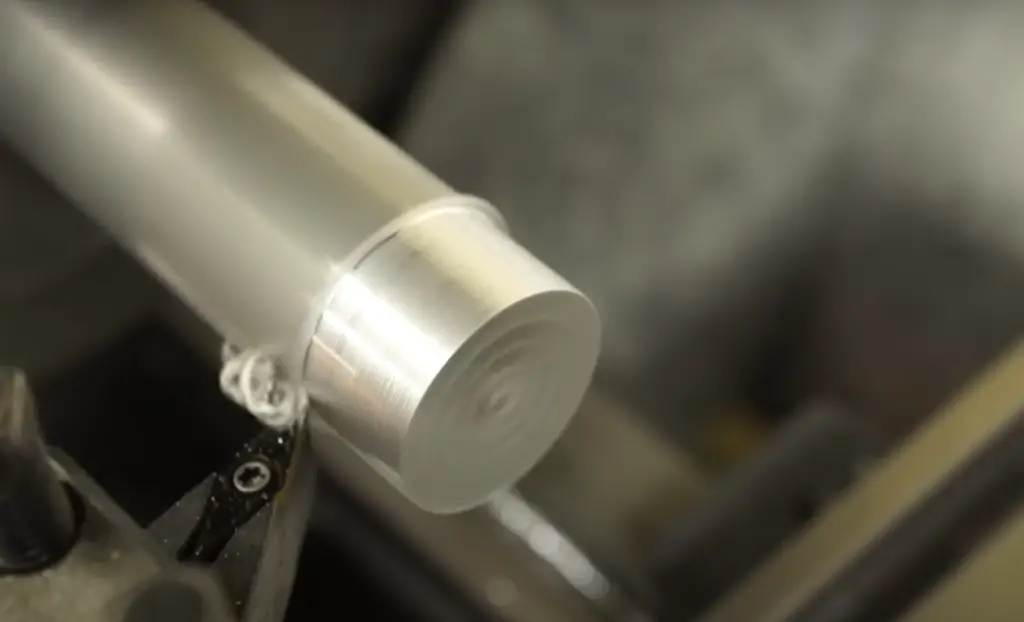
On the other hand, if all you need is a lightweight frame for a bike or some decorative outdoor furniture pieces, then going with 6061 aluminum would make more sense and save you money. It’s all about balancing cost versus performance to get the most out of your project.
In general, both types of aluminum are strong, durable, and versatile; however, if strength is the primary concern for your particular project, then 7075 may be the better choice. But that decision will ultimately come down to what is best for your specific application.
Ultimately, it comes down to weighing the cost against the performance benefits of each alloy before making a final decision. No matter which one you choose in the end, you can be sure that either option will deliver excellent results. With careful planning and consideration of factors like cost and performance requirements, you can make the best choice for your project. [6]
FAQ
What is the difference between Al 6061 and Al 7050?
The primary difference between Al 6061 and Al 7050 is that 6061 aluminum has higher levels of magnesium and silicon compared to 7075. As a result, 6061 offers better corrosion resistance and weldability but is less durable than 7075. Additionally, the mechanical properties of 6061 are lower than those offered by 7075 alloys.
What are the typical uses for each type of aluminum alloy?
6061 aluminum is often used in applications such as aircraft components, truck frames, bicycle frames and structural components due to its combination of strength and flexibility. Meanwhile, 7075 aluminum is commonly found in high-strength applications like aerospace parts, molds and tooling since it provides extremely high strength-to-weight ratio and great fatigue resistance.
What are the differences in cost between Al 6061 and Al 7050?
Al 6061 tends to be slightly less expensive than Al 7050 due to its lower strength and other properties. However, the price difference is not usually significant enough for one alloy to be considered a better value over the other. The final decision on which alloy to use should depend primarily on the particular application requirements.
What is the difference between 6061 and 7075 bike parts?
The main difference between 6061 and 7075 bike parts is in the material composition. While both alloys are aluminum-based, 6061 aluminum is a heat treated aluminum alloy made up of silicon and magnesium while 7075 aluminum consists of zinc as its primary alloying ingredient. The addition of zinc to 7075 results in a much harder and stronger alloy than 6061, making it an ideal choice for high load or stress bearing applications. 6061 aluminum is known for being lightweight yet strong, allowing manufacturers to make thinner components that can still withstand a great deal of force or pressure. This makes it the preferred choice for mountain bikes, BMX bikes, downhill bikes and other types of recreational bicycles where weight saving is paramount.
Why use 7075 aluminum?
7075 aluminum is best used for parts and components where strength is more important than weight savings, such as suspension components or pedal arms on a mountain bike. 7075 aluminum is also much more prone to fatigue failure than its 6061 counterpart which makes it the ideal choice for applications that are subjected to highly dynamic loads or repeated impacts. As an example, pedals made from 7075 aluminum can withstand greater force over time compared to those made with 6061. In addition, because of its increased hardness, 7075 aluminum requires less maintenance and produces fewer burrs during machining processes compared to 6061. This makes it a better option for parts that need to be mass-produced with great accuracy and efficiency.
Is 7075 more brittle than 6061?
Yes, 7075 aluminum alloy is generally more brittle than 6061 aluminum alloy. This means that it can be more prone to cracking than the other aluminum alloys when put under stress or load. However, its higher strength and hardness makes it a better choice for certain applications such as aerospace components where strength and hardness are necessary. Additionally, its higher fatigue resistance makes it suitable for items that require frequent bending or twisting, such as aircraft parts. While 6061 may have superior weldability and formability compared to 7075, the latter has much improved mechanical properties including tensile strength and yield strength which make it a better choice for some applications. Ultimately, your choice of aluminum alloy will depend on the specific application you’re using it for, and the properties that are most important to you. It’s best to consult with a professional when choosing between 6061 and 7075 aluminum alloys.
Useful Video: 6061 vs 7075 aluminum difference and comparison
Conclusion
At the end of the day, 6061 and 7075 aluminum are both excellent options for projects that require high strength and hardness. While one might be better suited for a particular application than the other, it’s important to remember that both materials offer exceptional performance when used correctly. Ultimately, determining which material is best for your project will depend on the specific requirements of your application. If you have any questions or need help deciding which aluminum is right for you, contact us today! We’re happy to work with you to select the best option for your project.
References:
- https://www.rapiddirect.com/blog/6061-vs-7075-aluminum/
- https://www.metalsupermarkets.com/differences-6061-and-7075-aluminum/
- https://www.kloecknermetals.com/blog/7075-aluminum-vs-6061-aluminum/
- https://www.onlinemetals.com/en/aluminum-6061-vs-7075
- https://www.gabrian.com/6061-vs-7075-aluminum/
- https://www.thomasnet.com/articles/metals-metal-products/6061-aluminum-vs-7075-aluminum/

